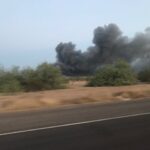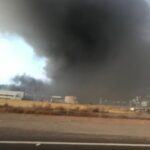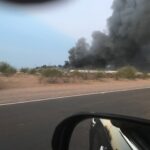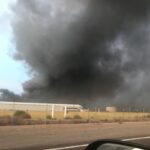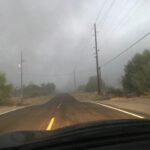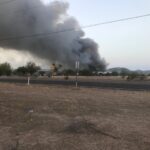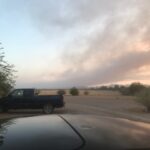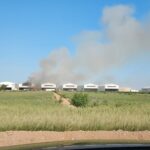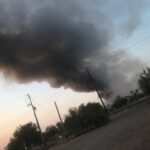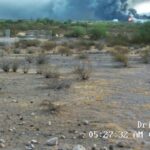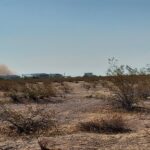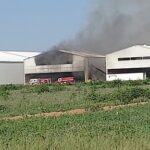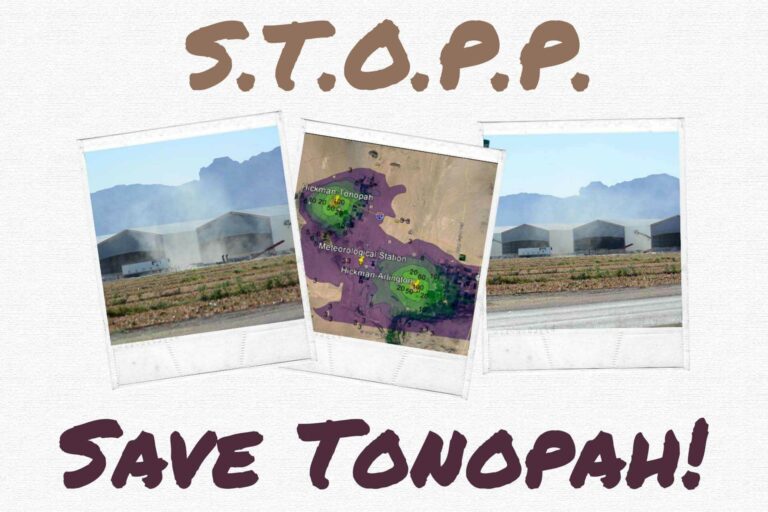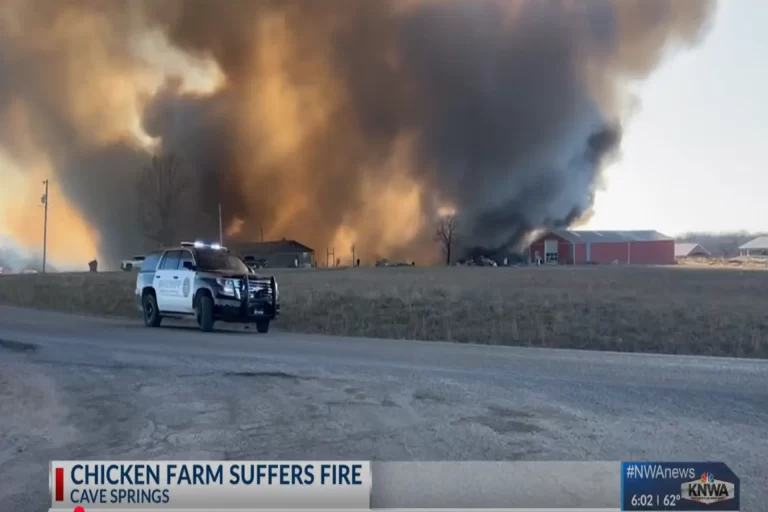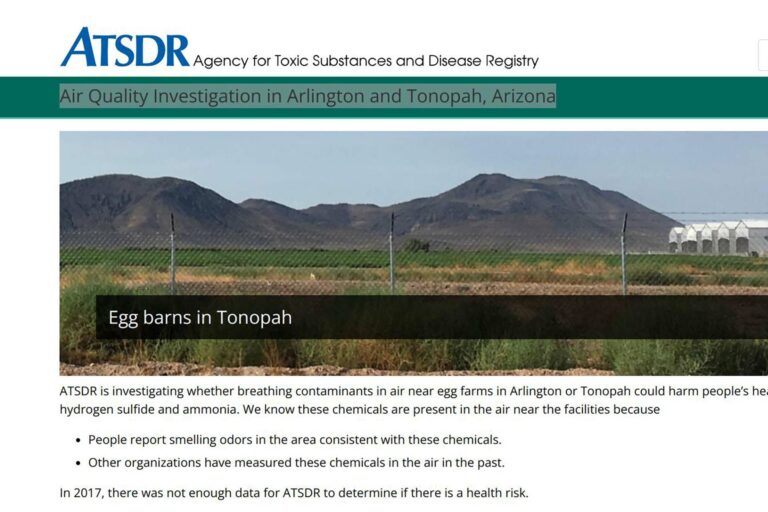On July 27, 2024, a massive fire erupted at Hickmans Family Farms’ egg ranch near Tonopah, Arizona, turning a 700-foot chicken coop into a smoldering graveyard for thousands of hens. For Tonopah Stopp, this disaster isn’t just another headline—it’s a glaring red flag about the risks posed by industrial egg farming in our backyard. Drawing from official incident reports and media coverage, we’re piecing together what happened, what it means for our community, and why Hickmans must answer for it.
The Blaze: A Timeline of Chaos
According to the Arizona Fire & Medical Authority (AFMA) incident report, the fire broke out at 41625 W. Indian School Rd. at 5:19 a.m. on Saturday, July 27, 2024. Under clear skies and scorching 100-degree heat, the first responders arrived to find Barn 12 “fully involved,” prompting a full first-alarm response. Fire Investigator Thomas O’Donohue self-dispatched at 5:45 a.m., arriving by 6:25 a.m. to a scene of utter devastation.
Sam Rushing, a feed delivery driver, first spotted smoke billowing from the third floor of Barn 12 while working at House 10 nearby. He called 911 immediately, but saw no one else around—a chilling detail in a facility that size. The NFIRS report confirms the scale of the response: over a dozen units, including engines, tankers, and mutual aid vehicles from stations like E371 and T371, battled the blaze for hours, with the last unit clearing at 1:36 p.m. Despite their efforts, the steel structure collapsed, leaving “thousands of dead chickens” strewn across the wreckage, as O’Donohue noted upon returning July 29.
The Toll: Lives and Dollars Lost
The exact number of hens killed remains undisclosed—Hickmans has stayed tight-lipped—but the scale of Barn 12 suggests losses in the tens or hundreds of thousands. This isn’t speculation; it’s a pattern. A 2021 fire at Hickmans’ Arlington, AZ facility killed 165,000 hens (WPXI), and the Animal Welfare Institute estimates over 7.39 million animals have died in similar fires at large-scale operations since 2013. Financially, AFMA pegs the loss at $11 million for the structure and $14 million including contents, with $28 million in nearby exposures protected. That’s a staggering hit, but for Tonopah residents, the cost goes beyond dollars.
Environmental and Community Fallout
The fire’s aftermath left more than charred metal and feathers. Thick smoke hung over Tonopah, a rural area where clean air is a lifeline. The Arizona Republic reported on the plume visible for miles, raising immediate concerns about air quality. Then there’s the water: with no hydrants nearby, tankers like T341 and T328 hauled thousands of gallons to douse the flames. Where did that runoff go? In a desert ecosystem, contaminated water from a fire laden with chicken waste could seep into groundwater or dry washes, threatening our scarce resources.
O’Donohue’s July 29 visit revealed a structure so unstable it creaked and thumped, forcing him to retreat. This isn’t just a safety issue for investigators—it’s a hazard for anyone downwind or downstream. Hickmans’ silence on these impacts only fuels our unease.
Investigation Stalled: What Aren’t We Being Told?
The cause remains “undetermined” per the NFIRS report, with the area of origin, heat source, and first ignited item all listed as unknown. O’Donohue collected thermostat printouts to track temperature spikes before the system failed, but Hoodline notes the investigation awaits a structural engineer’s clearance—eight months later, we’re still in the dark. Video cameras, as Special Projects Manager Paul Yeatts admitted, were too distant to capture anything useful. Jessica Morrison, Production Manager, confirmed temperature sensors were in place, but their data hasn’t been shared publicly.
This opacity isn’t new. Wattagnet reported Hickmans’ history of fires—2019, 2021, and now 2024—yet details on prevention measures remain scarce. The NFIRS notes no fire suppression system was present in Barn 12, a glaring omission given the NFPA 150 push for sprinklers in such facilities, as championed by the Animal Welfare Institute.
Tonopah Deserves Answers
For Tonopah Stopp, this fire isn’t an isolated incident—it’s a wake-up call. Why did Barn 12 lack sprinklers? What failed to let the fire spread so fast? And why is Hickmans dragging its feet on transparency? Our community shouldn’t bear the burden of their negligence—whether it’s smoke in our lungs, toxins in our water, or the next disaster waiting to happen.
We demand Hickmans:
- Release the full scope of hen losses and environmental impact assessments.
- Retrofit all Tonopah facilities with fire suppression systems—yesterday.
- Partner with AFMA to ensure rural response isn’t a losing battle.
Tonopah residents, this is our fight. Share your stories—did you smell the smoke? See the runoff? Contact Tonopah STOPP here. Together, we’ll hold Hickmans accountable and protect our home from the next inferno.

